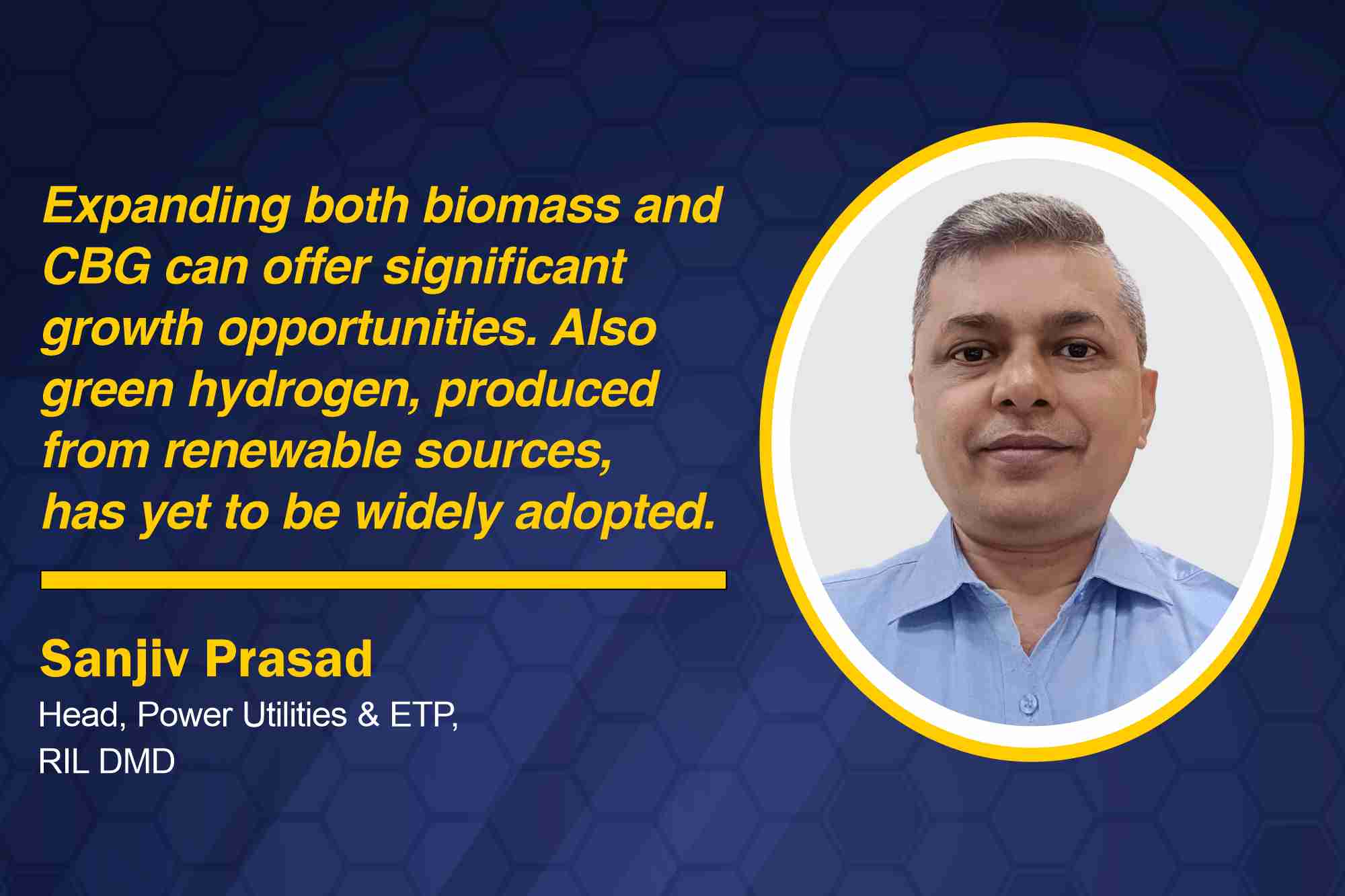Expanding Solar, Wind, and Biomass for Sustainable Growth
By Staff Report August 26, 2024 6:13 pm IST
By Staff Report August 26, 2024 6:13 pm IST

Expanding both biomass and CBG can offer significant growth opportunities. Also, green hydrogen, produced from renewable sources, has yet to be widely adopted.
Sanjiv Prasad, Head, Power Utilities & ETP, RIL DMD
Energy is crucial for economic stability, and sustainability ensures long-term viability. Transitioning to renewable sources like solar, wind, hydro, biomass, and hydrogen is essential. While initial efforts focused on solar and wind capacities, newer technologies such as compressed biogas (CBG) and green hydrogen are becoming increasingly important.
Expanding renewable energy capacities
The Indian government has encouraged the installation of solar panels on rooftops, allowing households to generate up to 300 units of their energy and sell the excess. Despite this, the economic feasibility of widespread solar adoption remains challenging. To improve this, manufacturing capacities need to increase, and costs need to decrease. Solar power also faces issues related to waste management and ageing infrastructure.
Wind energy potential in India still needs to be utilised. While ongoing development efforts are underway, significant progress is needed to harness this resource fully. Increased incentives and supportive regulations are necessary to accelerate wind power development.
Regulations require biomass energy to make up at least 5 percent of power production, but it still needs to be fully utilised. With an estimated 230 million metric tons of biomass available annually, only a small fraction is currently used. Compressed biogas (CBG) also holds promise but is limited in production. Expanding both biomass and CBG can offer significant growth opportunities.
Green hydrogen, produced from renewable sources, has yet to be widely adopted. Its development is crucial for a sustainable energy future.
Addressing challenges and future directions
The challenge of providing round-the-clock renewable power persists. Storage options like pump and battery technology are not cost-effective for long-term use. Alternative storage methods need to be developed to replace thermal energy completely.Capital investment and energy efficiency remain major concerns. Government incentives and support are necessary to overcome these barriers. Biomass technology advancements and recycling and waste management improvements are also needed to enhance efficiency.
Solar power installations require large amounts of land, presenting challenges for space utilisation. Innovations such as floating solar panels have faced issues like damage during monsoons. Alternative locations and technologies for solar installations need exploration.
Effective policy implementation is crucial to address the issue. Discrepancies between central and state regulations can hinder investments. Addressing these gaps will help facilitate the execution of renewable energy projects.
Progress and Future Outlook
India has made significant progress in renewable energy over the past decade. Wind power capacity has doubled, solar power has grown thirty-fold, and biomass and waste-to-energy capacities have also increased. However, solar power has grown most, with other sources remaining underutilised.
To achieve a sustainable energy future, it is essential to continue expanding renewable energy capacities and improving technologies. India can move towards a self-reliant and energy-efficient future with government support and innovative solutions.
We use cookies to personalize your experience. By continuing to visit this website you agree to our Terms & Conditions, Privacy Policy and Cookie Policy.